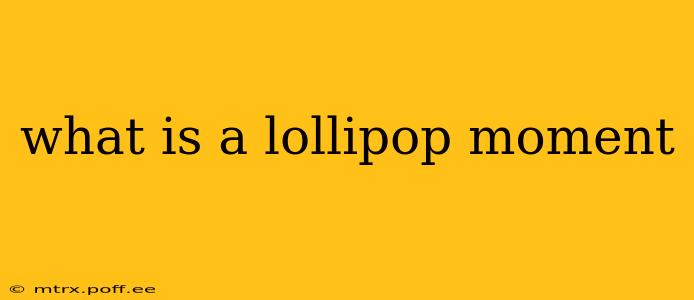In the fast-paced world of user experience (UX) design, the term "lollipop moment" refers to a small, unexpected delight that enhances a user's interaction with a product or service. It's that little extra something that goes beyond the functional requirements and creates a positive, memorable experience. Think of it as a tiny, sweet treat that makes the user smile—hence the "lollipop" analogy.
These moments aren't about grand gestures or significant feature additions. Instead, they're about the subtle details that elevate the overall user experience. They're the sprinkles on top of the UX cake, adding a touch of magic and personality.
What Makes a Lollipop Moment Effective?
A truly effective lollipop moment possesses several key qualities:
- Unexpectedness: It should be a surprise, something the user isn't anticipating. It's about delighting them with something unprompted.
- Relevance: It needs to be relevant to the user's current task or context. A random, unrelated surprise might be jarring rather than delightful.
- Subtlety: It shouldn't be intrusive or disruptive. It should seamlessly integrate into the overall user experience without drawing undue attention to itself.
- Personalization (optional): While not always necessary, personalization can greatly enhance the impact. A customized message or interaction can feel especially meaningful.
- Memorability: A truly great lollipop moment sticks in the user's mind long after the interaction is complete.
Examples of Lollipop Moments
To illustrate the concept, let's explore some examples:
- A playful animation: A simple, charming animation triggered by a user action (like completing a task or achieving a goal).
- A personalized message: A greeting that uses the user's name or refers to their past interactions with the product.
- A fun sound effect: A cheerful jingle or satisfying "ding" that accompanies a successful action.
- An Easter egg: A hidden, playful element that rewards exploration and curiosity.
- Unexpected helpfulness: A proactive feature that anticipates a user's needs or solves a problem before they even realize it.
How to Design Effective Lollipop Moments
Designing effective lollipop moments requires careful consideration of the user's context and goals. Here are some tips:
- Understand your users: What are their motivations? What are their pain points? What would genuinely delight them?
- Start small: Don't overthink it. Simple, subtle moments can be just as effective as elaborate ones.
- Test and iterate: Try different approaches and see what resonates with your users. Gather feedback to refine your designs.
- Maintain consistency: Ensure that your lollipop moments are consistent with your brand's personality and voice.
Frequently Asked Questions (FAQs)
What's the difference between a lollipop moment and gamification?
While both aim to enhance user experience, they differ in scope and purpose. Gamification often involves a more structured system of rewards and challenges, whereas lollipop moments are generally smaller, less systematic, and more focused on unexpected delight.
Are lollipop moments necessary for a successful product?
No, lollipop moments are not strictly necessary for a successful product. However, they can significantly improve user satisfaction and loyalty. They add a human touch and make the interaction more enjoyable and memorable.
How can I measure the effectiveness of lollipop moments?
Measuring the impact of lollipop moments can be challenging, but you can use qualitative methods like user interviews and feedback surveys, and quantitative methods such as observing user behavior (e.g., time spent, engagement metrics).
Can lollipop moments be used in all types of products and services?
Yes, lollipop moments can be incorporated into almost any product or service, from apps and websites to physical products and customer service interactions. The key is to tailor them to the specific context and user base.
By understanding the principles behind lollipop moments and employing thoughtful design, you can create user experiences that are not only functional but also delightful, memorable, and ultimately, more successful.
